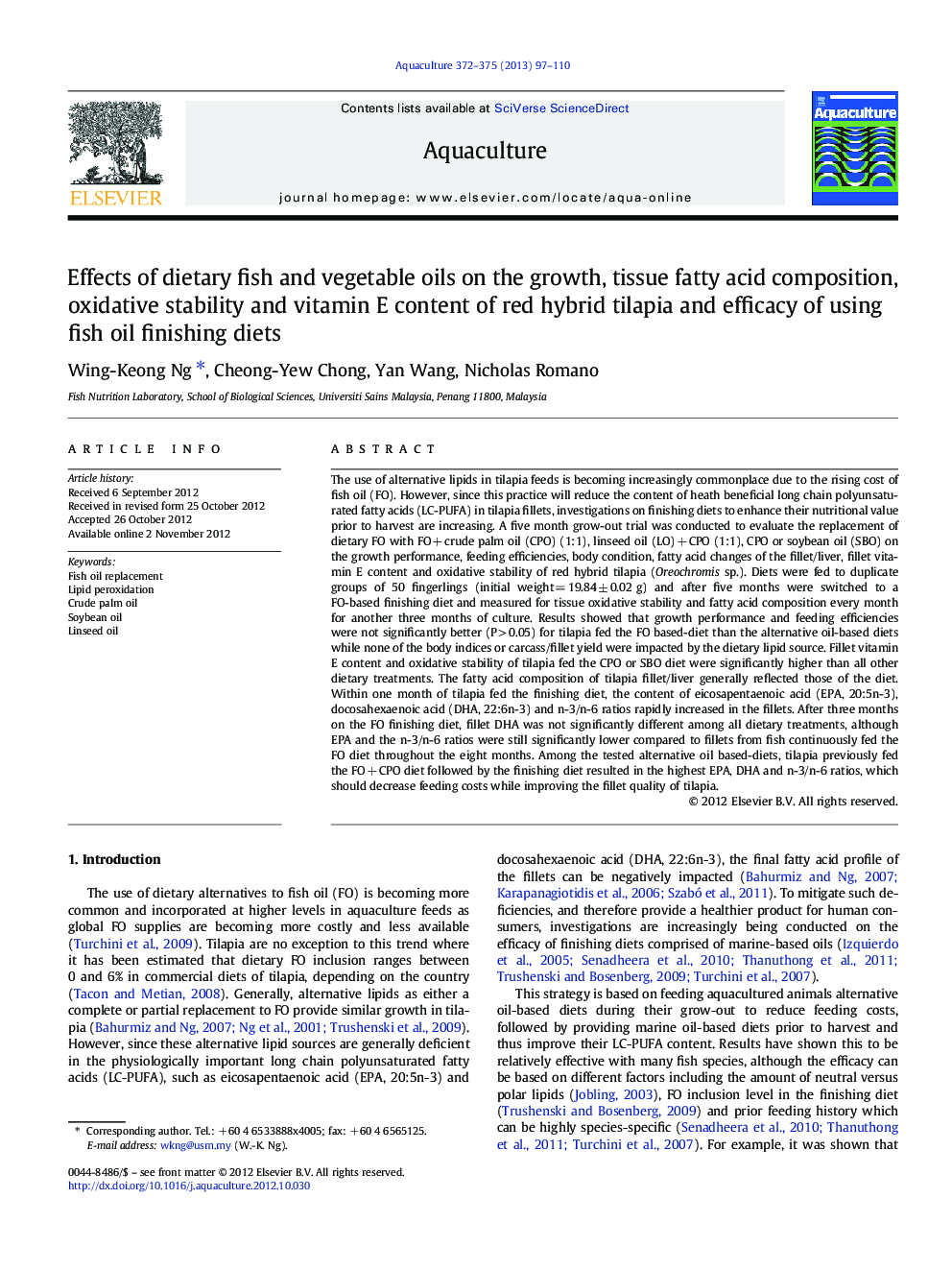| Article ID | Journal | Published Year | Pages | File Type |
|---|---|---|---|---|
| 2422282 | Aquaculture | 2013 | 14 Pages |
The use of alternative lipids in tilapia feeds is becoming increasingly commonplace due to the rising cost of fish oil (FO). However, since this practice will reduce the content of heath beneficial long chain polyunsaturated fatty acids (LC-PUFA) in tilapia fillets, investigations on finishing diets to enhance their nutritional value prior to harvest are increasing. A five month grow-out trial was conducted to evaluate the replacement of dietary FO with FO + crude palm oil (CPO) (1:1), linseed oil (LO) + CPO (1:1), CPO or soybean oil (SBO) on the growth performance, feeding efficiencies, body condition, fatty acid changes of the fillet/liver, fillet vitamin E content and oxidative stability of red hybrid tilapia (Oreochromis sp.). Diets were fed to duplicate groups of 50 fingerlings (initial weight = 19.84 ± 0.02 g) and after five months were switched to a FO-based finishing diet and measured for tissue oxidative stability and fatty acid composition every month for another three months of culture. Results showed that growth performance and feeding efficiencies were not significantly better (P > 0.05) for tilapia fed the FO based-diet than the alternative oil-based diets while none of the body indices or carcass/fillet yield were impacted by the dietary lipid source. Fillet vitamin E content and oxidative stability of tilapia fed the CPO or SBO diet were significantly higher than all other dietary treatments. The fatty acid composition of tilapia fillet/liver generally reflected those of the diet. Within one month of tilapia fed the finishing diet, the content of eicosapentaenoic acid (EPA, 20:5n-3), docosahexaenoic acid (DHA, 22:6n-3) and n-3/n-6 ratios rapidly increased in the fillets. After three months on the FO finishing diet, fillet DHA was not significantly different among all dietary treatments, although EPA and the n-3/n-6 ratios were still significantly lower compared to fillets from fish continuously fed the FO diet throughout the eight months. Among the tested alternative oil based-diets, tilapia previously fed the FO + CPO diet followed by the finishing diet resulted in the highest EPA, DHA and n-3/n-6 ratios, which should decrease feeding costs while improving the fillet quality of tilapia.
► Tilapia fed various vegetable oil-based diets exhibited good growth performance. ► Fillet vitamin E were high in fish fed soybean oil or palm oil-based diets. ► Oxidative stability of fillets was higher in fish fed palm oil-based diets. ► Fillet DHA levels were not different among treatments after fed a finishing diet.
